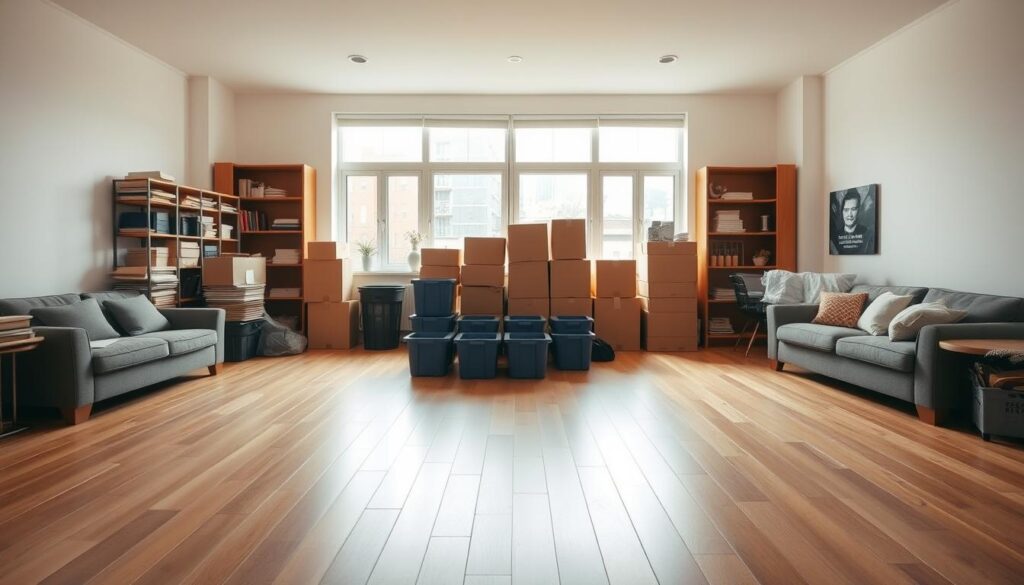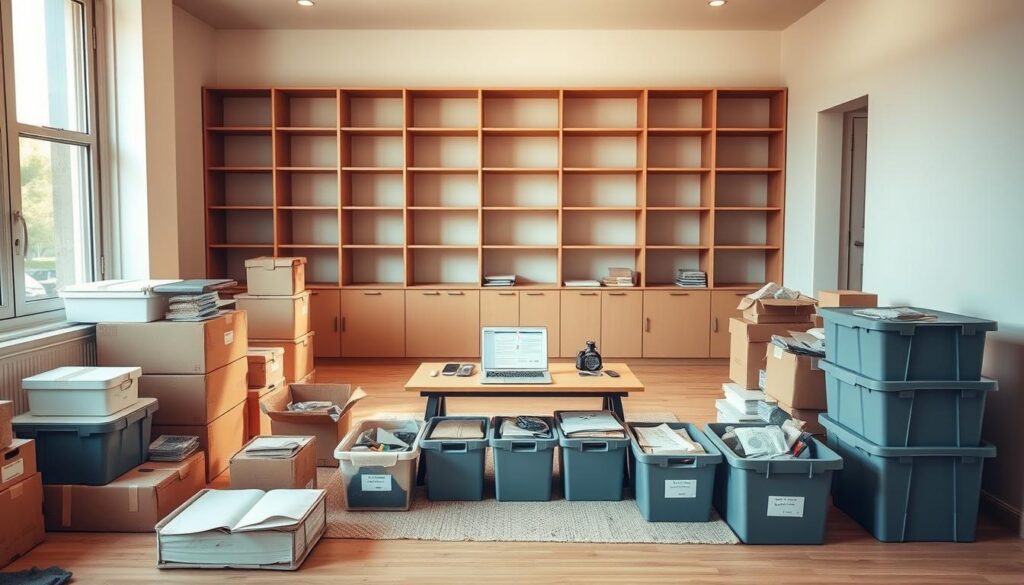Moving can be emotionally and physically draining, especially when it comes to clearing out your flat. Whether you’re relocating, downsizing, or preparing a property for sale, clearing leftover items adds an extra layer of stress. Without professional assistance, dealing with heavy furniture, limited access, and tight schedules can quickly become overwhelming.

Fortunately, hiring a trusted flat clearance service can completely transform your experience. These expert teams handle everything from bulky item removal to eco-conscious disposal—making your transition simpler, safer, and faster.
Key Takeaways
- Professional flat clearance services manage bulky furniture, appliances, and general clutter efficiently.
- Many services offer same-day availability and upfront pricing.
- Licensed teams follow eco-friendly practices, often recycling or donating up to 95% of items.
- Pre-clearance planning and communication ensure a smooth process.
- Proper preparation and coordination can significantly reduce time and costs.
What Is Flat Clearance?
Flat clearance refers to the complete removal of unwanted items from a residential property. This includes furniture, electrical appliances, clothing, waste, and more. Professional teams often provide end-to-end services, covering collection, transportation, disposal, recycling, and cleanup.
In the UK, where urban properties are often compact with limited access, clearance services are especially helpful. They come prepared with the right tools and experience to tackle narrow staircases, top-floor apartments, and restricted parking zones.
Why Clearance Services Matter in the UK
UK cities like London, Manchester, and Birmingham feature tightly packed properties, older buildings, and limited lift access—all factors that complicate the moving process. Flat clearance companies specialise in navigating these obstacles. Their teams are trained to remove large and fragile items without causing damage to property or surroundings.
More importantly, most reputable providers focus on sustainable waste practices, aligning with the UK’s environmental goals. This means your old items might be recycled, repurposed, or donated rather than sent to landfill.
Helpful Resource: Check your local council’s recycling guidelines for item-specific disposal rules.
The Flat Clearance Process Explained

1. Initial Assessment
Before beginning, professionals assess the property to estimate time, costs, and equipment required. This includes identifying bulky furniture, electronics, and special disposal needs. This stage ensures your clearance is efficient and tailored to your flat.
2. Item Removal and Disposal
After planning, the team arrives with appropriate tools—like stair climbers, lifts, trolleys, and protective gear—to safely remove items. They separate recyclables and reusables from general waste and deliver them to licensed facilities or charitable partners.
Flat Clearance Options and Pricing in the UK
Most companies offer multiple service tiers based on the volume and urgency of the job. Here’s a typical breakdown:
| Service Type | Timeframe | Average Cost | Best For |
|---|---|---|---|
| Standard Clearance | 1–2 days | £150–£300 | Light to moderate loads |
| Same-Day Clearance | 24 hours | £250–£500 | Urgent removals |
| Full Property Service | 1 day | £400–£800 | Complete flat clearouts |
Prices vary depending on location, access, and volume of waste.
To get an accurate quote, most providers offer free site visits or online estimates. Always confirm that prices include VAT and there are no hidden disposal fees.
How to Prepare for a Successful Flat Clearance
Decluttering in Advance
Start by sorting your belongings by room. Create separate categories for:
- Items to keep
- Items to donate or sell
- Recyclables
- Waste
Label boxes clearly and consider contacting charities to collect usable items. Some popular platforms for donations include:
Safety and Practical Tips
- Wear appropriate footwear and gloves.
- Dismantle large furniture if possible.
- Clear walkways and staircases.
- Notify your neighbours if the clearance might cause noise or temporary obstructions.
Working with Accredited Professionals

Choosing a licensed clearance company ensures compliance with UK waste laws and environmental standards. Look for businesses with:
- Waste Carrier Licences
- Public liability insurance
- Transparent pricing policies
- Experience in urban flat clearances
Certified teams not only handle removals safely but also provide detailed disposal reports—ideal if you’re a landlord or tenant needing proof of responsible waste management.
Internal Link Tip: For landlords preparing multiple properties, our end-of-tenancy cleaning checklist offers further insights.
Eco-Friendly Disposal and Recycling Initiatives
Today’s leading flat clearance companies prioritise sustainability. Here’s how:
Recycling Procedures
At licensed recycling facilities, items are sorted into categories such as:
- Plastics and metals
- Electronics (e.g. via WEEE-certified processors)
- Organic waste (e.g. compostable garden materials)
Mattresses, for example, are often stripped for foam and fabric recovery, while fridges are safely de-gassed and dismantled.
Donation and Reuse Programmes
Many companies work with charity partners to give furniture, appliances, and clothing a second life. Common practices include:
- Safety checks on electricals
- Furniture refurbishment
- Donation to shelters or community shops
Special Considerations for Bulky and Hazardous Items
Some items require special care or disposal methods due to size, weight, or material.
| Item | Handling Tips | Disposal Route |
|---|---|---|
| Sofas | Disassemble when possible | Local recycling centre or reuse |
| Fridges/Freezers | Handle upright, de-gas safely | Certified recycler |
| Electronics | Data wipe laptops and phones before disposal | WEEE recycling |
| Paints/Chemicals | Do not mix with general waste | Hazardous waste centre |
Always check local council policies before attempting to dispose of restricted materials yourself.
Navigating Clearance in Challenging Flats
Urban clearances often involve restricted access, limited parking, or building restrictions. Professional teams use innovative techniques to overcome these:
- Stair-climbing dollies for upper-floor units
- Modular furniture breakdown for narrow hallways
- Compact vans and electric trolleys for tight spaces
- Protective wraps to avoid property damage
For example, removing a large antique wardrobe from a top-floor Islington flat may require partial disassembly and stair-mounted hoists.
Move-Out Day Planning: How to Stay Organised
Make your move-out day smooth by coordinating closely with your chosen clearance team. Here’s how:
- Schedule Wisely: Choose daylight hours for better visibility and easier navigation.
- Share Property Details: Inform the team about lift access, parking limitations, or fragile items.
- Group Items by Type: Electronics, furniture, and garden waste should be separated to streamline removal.
- Protect Floors and Corners: Use mats and guards, especially in older or recently renovated flats.
Conclusion: Make Moving Simple with Professional Flat Clearance
Clearing out a flat doesn’t have to be a headache. With professional flat clearance services, you gain peace of mind knowing the job will be done efficiently, legally, and sustainably. Whether you’re vacating a studio or managing an estate clearance, expert help saves time and ensures nothing is left behind.
Services are tailored to your needs—from urgent same-day requests to large-scale removals. Eco-friendly disposal practices and accredited teams ensure every clearance leaves a minimal footprint.
Ready to book your clearance? Choose a licensed provider that offers upfront quotes and eco-conscious services for a move that’s both smooth and sustainable.
Moving out can be stressful, with leftover belongings adding to the challenge. Whether downsizing, relocating, or selling, emptying a flat efficiently is key. Many find it overwhelming due to bulky furniture, tight spaces, or lack of time.